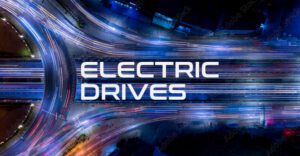ŠKODA AUTO has announced a new brand identity as part of the automaker’s NEXT LEVEL – ŠKODA STRATEGY 2030. The focus is on a new design language, a new logo and updated corporate identity, and most importantly, accelerating and expanding its electric vehicle (EV) campaign.
ŠKODA will offer three new all-electric models to the market as early as 2026, with more to follow. The VISION 7S concept study offers an insight into one of these models.
The all‑electric share of the ŠKODA brand’s European vehicle sales will rise to over 70 percent by 2030. To support this, ŠKODA will be investing a further €5.6 billion in emobility and €700 million in digitalisation over the next five years. This is a big investment and the company obviously see the future as electric.
Klaus Zellmer, ŠKODA AUTO CEO, said: “With the VISION 7S concept study, we’re giving a specific preview of an entirely new ŠKODA model that will round off the top end of our product portfolio and customer base.
“Also, we’re significantly accelerating our e-campaign and will be launching three additional all-electric models by 2026, with more in the pipeline. This will put us in an even stronger position for the decade of transformation.
“In addition, we’ll be investing a total of €5.6 billion in emobility and a further €700 million in digitalisation over the next five years, thus securing the future viability of the company and jobs.”

The three electric cars ŠKODA are planning include a small car, a compact SUV and a seven-seater for families. The VISION 7S concept study, with its range of over 370 miles (600km) and peak charging rate of 200kW, offers a specific preview of the seven-seater electric SUV. These models follow the announcement earlier in the year that the company was launching its new ENYAQ COUPÉ iV saloon car.
Martin Jahn, ŠKODA AUTO Board Member for Sales and Marketing, said:“Through our new brand identity, we’re getting ready for the electric future and clearly positioning ŠKODA among the external competition while at the same time distinguishing ourselves even more clearly from the other brands in the Volkswagen Group.
“The VISION 7S is the forerunner of our new design language that we’ll be rolling out across the entire product portfolio over the coming years. We’ll also be using it to sharpen our customer appeal with the new styling, we are taking the brand to the next level and aligning it to our customer’s new needs and expectations, particularly regarding user experience (UX), connectivity and the entire customer journey.”
ŠKODA AUTO is a strong advocate of sustainability along the entire value chain. For example, the company is committed to using electricity from renewable sources. In Mladá Boleslav, producing batteries directly at the plant ensures short transport distances, with the carmaker using two electric trucks for this purpose.
From 2030, the Czech and Indian plants will be manufacturing cars with net-zero emissions. The Vrchlabí plant is leading the way with the site being CO2‑neutral since 2020.
ŠKODA is also committed to sustainability in its products. For example, the ENYAQ iV uses 13 kilograms of recycled plastics recovered from end-of-life battery cases and bumpers.

The recycling rate for steel used in the body is 40 percent, while the aluminium recycling rate is as high as 60 percent. The side windows are made of 20 percent recycled glass. In the interior, the ENYAQ iV also offers seat covers made of 40 percent virgin wool and 60 percent recycled PET bottles.
ŠKODA has also enlisted the support of a Sustainability Advisory Council to implement its ambitious sustainability goals. The five internationally experienced members provide new impetus and suggestions for current and future measures related to sustainability. This way, they promote a more versatile dialogue on sustainability topics between the car manufacturer and its stakeholders.



